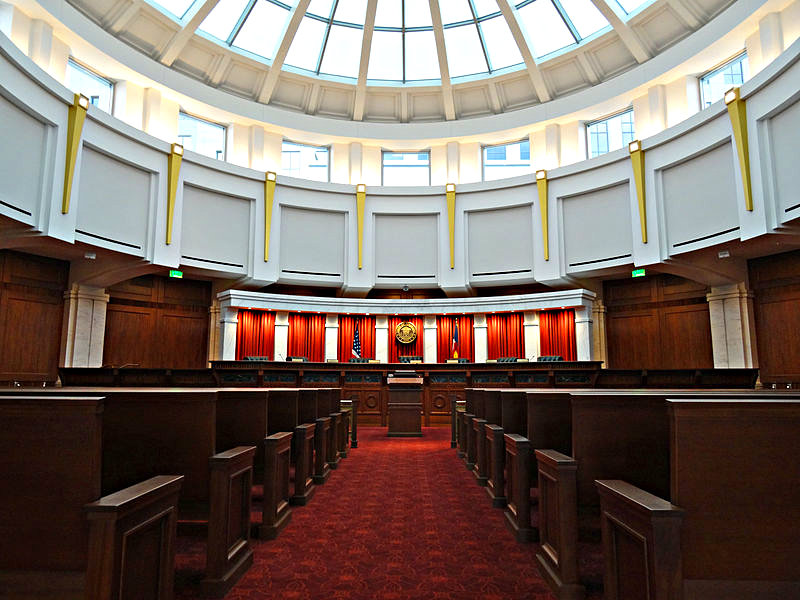
The Colorado Supreme Court heard oral arguments Wednesday in a lawsuit that has major implications for how much money school districts get from the state.
The hour-long hearing at times resembled a high-level math class, with justices trying to understand the complexities of the state’s labyrinthine, multi-layered school finance system.
The lawsuit, filed in June by parents and dozens of school districts, claims that state lawmakers, by slashing funding for education, aren't following what voters intended when they passed Amendment 23.
When voters passed the amendment in 2000, the state was supposed to gradually catch up to 1988 funding levels and hold steady. But during the recession, lawmakers created a tool to cut a billion dollars from schools, called the “negative factor.”
They argued at the time it was necessary to keep K-12 funding from squeezing out money for other parts of the budget. Plaintiffs say the “negative factor” is unconstitutional.
How the school funding system works
The school funding pie has several pieces. The two biggest are the “base” – the amount schools receive per-pupil which is the same for all school districts. Then there are the “factors” -- those vary depending on local conditions like cost of living, the number of at-risk students, or the size of the districts.
For example, in the year Colorado Springs District 11 received more than $7,000 total funding per pupil, about $5,500 constituted the base, and $1,600 constituted the “factor” funding.
Lawyers representing the state argued that Amendment 23 requires annual increases in base per pupil education funding to keep pace with inflation and enrollment increases.
“It does not require inflationary increases to the total funding that school districts receive above and beyond the base,” said Colorado Assistant Attorney Gen. Jonathan Fero.
“There’s not a school district in this state that has not been receiving at least the base level of funding,” he added.
Up until the 2010-2011 school year, lawmakers applied enrollment and inflation increases to factor and base funding. But then the “negative factor” was created and factor funding decreased.
Plaintiffs say that lawmakers created a charade, state disagrees
Asked to respond to plaintiff’s claims that the budgetary maneuver was a charade, Fero responded told the court that it's not a charade.
“The negative factor reduces the amount of money that the legislature has provided to districts for the factors,” he said.
Attorney Sean Connelly, representing parents and school districts, said when state lawmakers cut the “factor” piece of the funding pie for schools – they rendered Amendment 23 meaningless.
“The state has engaged in an accounting gimmick and they’ve done so with the sole intent of circumventing the plain language and the plain intent of Amendment 23,” he said.
Plaintiffs argued that what’s really happening is, depending on the revenue the state receives in any given year, the state sets a cap on how much it has to spend for education. That has meant drastically whittling the “factor” funding to allow the base to increase each year to keep pace with inflation.
The school finance formula is "not driving spending anymore," instead what's driving spending is "a 'pre-set' funding cap,” which is not what voters intended, said Attorney Sean Connelly.
He argued that voters amended the constitution in 2000 because of significant underfunding of Colorado schools during the previous decade.
“Amendment 23 was meant to be a budgetary game changer,” he told the justices. “It was a big deal. It was not meant to encourage accounting gimmicks or a ruse. It was a big deal to tie the hands of the legislature in good times and in bad.”
It’s unclear when the Supreme Court will rule on the matter.








